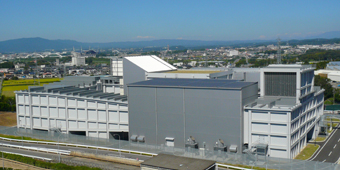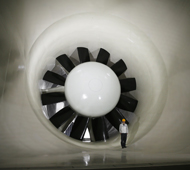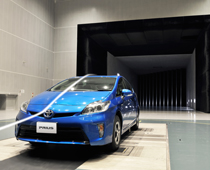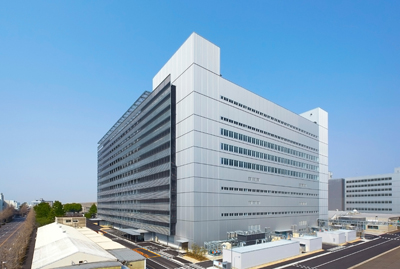Mar. 27, 2013
TMC Completes Enhanced R&D Facilities for Making Ever-better Cars
Toyota City, Japan, March 27, 2013―Toyota Motor Corporation (TMC) announces the completion of the Powertrain Development and Production Engineering Building at Honsha Plant, which will serve as a development base for next-generation powertrain components, and the completion of the Aerodynamics Laboratory at the Honsha Technical Center, which will pursue enhanced automotive aerodynamic performance. The two facilities will serve to accelerate TMC's efforts to make ever-better cars.
Remarks by Executive Vice President Mitsuhisa Kato
Questions and Answers
The Unit Center, a new organization that will develop globally competitive "unit" components (including major powertrain components such as engines and transmissions) and bring them promptly to market, will be established on April 1. The Unit Center will consist of various R&D and production engineering units that are to be consolidated at Honsha Plant―the roots of TMC's operations. Unit Center operations began in February at the Powertrain Development and Production Engineering Building, a facility which will serve as a development center for next-generation powertrain components―the very core of an automobile―as TMC aims to make ever-better cars.
In addition to the integration of R&D and production engineering units at the facility, development processes have also been reformed to aid the development of new technologies and new production methods. The building features company-first paperless offices, no assigned desks, and many free work spaces that engineers can use at any time for collaboration and discussion while viewing diagrams, parts and vehicles.
The Powertrain Development and Production Engineering Building is 12 stories high with a total floor area of approximately 100,000 square meters. Floors seven through nine serve as the integrated development offices for R&D and production engineering units, while floors 10 through 12 are for prototype and production method development and parts analysis. Floors one through six are used for assessment and compatibility testing with a focus on major components and vehicles. With all these units in the same building, the different sequences of the powertrain development process can be integrated. During normal operations, approximately 2,800 employees will work in the building.

Powertrain Development and Production Engineering Building
The Aerodynamics Laboratory will develop technologies for aerodynamic management to enhance automobile environmental performance, driving performance and quietness.
The Aerodynamics Laboratory, where operations began this month, is equipped with a large fan and a moving belt system that can simulate vehicle operation and environments with wind speeds of up to 250 km/h, making precise evaluation of aerodynamic characteristics possible under a range of driving conditions, from city to highway driving. The walls and floor of the wind tunnel have optimally placed sound-absorbing material to create a low-noise environment, enabling assessment of wind noise and other sounds.
The placement of the Aerodynamics Laboratory in the Honsha Technical Center will facilitate close collaboration among design, development, and testing divisions, leading to more attractive and quieter designs as well as enhanced maneuverability and driving stability. This is the first renovation since TMC introduced its first such facility in 1969 and represents a major augmentation of TMC's aerodynamic technology development system and processes.
The Aerodynamics Laboratory is intended to bolster efforts to reduce air resistance and further improve environmental performance. Reducing air resistance is extremely effective for improving fuel efficiency during high-speed driving. When driving at 100 km/h, approximately 70 percent of resistance on the vehicle is air resistance. TMC is developing environmental technologies in accordance with one of its fundamental policies of improving energy savings through fuel efficiency and encouraging the use of alternative energy sources such as electricity and hydrogen.
Based on the Toyota Global Vision, TMC is committed to contributing to the betterment of towns and societies as a good corporate citizen through the manufacture of ever-better cars that exceed expectations.
| Wind tunnel type | Circuit, low-noise driving simulation wind tunnel |
| Maximum air speed | 250 km/h |
| Fan | 9 m fan diameter; 8,000 kW output |
| Air portal dimensions | 7 m wide × 4.5 m high |
| Tunnel dimensions | 110 m long, 52 m wide, 27 m high |
| Main equipment | - Six-component balance with 5-belt moving belt system - Sound analysis system - Wide-area, three-dimensional flow analysis system |

Aerodynamics Laboratory

Wind Tunnel Fan

Vehicle Test








